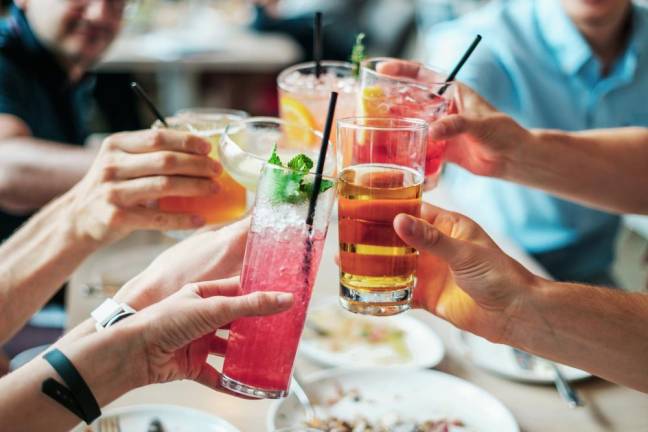Before You Lift That Glass
How to be moderately merry

Lift a glass to say, “Happy holidays,” and smile.
Lift too many and the next morning will be anything but.
How to enjoy the former and avoid the latter?
For starters, your liver metabolizes about one-half ounce of alcohol an hour. Consume more than that, and the overflow will continue to slosh around your bloodstream triggering all sorts of unpleasantries. Like what? The Bathroom Blues. When alcohol travels to your brain, it lowers the production of hormones that control the amount of urine your body makes. Guess what happens next. Moving on to your muscles, think lactic acid, a natural byproduct of muscle movement which is normally converted into enzymes that fuel energy. But processing alcohol grabs up those enzymes leaving lactic acid to pile up painfully in muscle tissue.
For some reason which to this day remains a medical mystery, men metabolize alcohol more efficiently than women and are better able to deal with any overflow, which is why the Centers for Disease Control and Prevention (CDC) says moderate drinking means one a day for females but two for males.
That begs the question: what’s one drink? All alcohol beverages are water plus alcohol, a solution defined by two terms right there on the bottle label: ABV (which stands for “alcohol by volume”) and Proof (which is two times ABV). In other words, that 20-year-old 100 Proof single malt Scotch on your bar is 50 percent alcohol which means one-half ounce alcohol in every 1-ounce shot. With few exceptions, five ounces of wine or 12 ounces of beer deliver the same amount.
Calorie Counts
Although alcohol beverages are fermented or distilled from real foods, their nutrition value is zero except for calories: Less than 40 for one ounce of distilled spirits, 150 for a “regular” beer (craft beers may hit higher than 300), and up to 160 for five ounces of most wines. Dessert wines with added sugar hover around 150. Want to know more? There’s a complete list of calorie counts in dozens of glasses at: https://medlineplus.gov/ency/patientinstructions/000886.htm.
Now back to real food. Eating matters when you’re drinking because a full stomach slows the flow of alcohol into your bloodstream. The best bet, reported Erin Morse, chief clinical dietitian at UCLA Health, is fresh veggies, which provide both nutrients and water that further dilutes the alcohol in your glass. If you’re not a fan of green, red, yellow and orange plants, go for brown: A whole-grain bread sandwich or wrap will do. And, no, fatty foods do not sop up the alcohol and keep you sober.
Wait! One more thing - check your meds, a whole list of which, including pills as plain as acetaminophen (Tylenol), interact with alcohol and not to your benefit. And forget the idea that alcohol corrects your cholesterol. True, as it flows through your blood stream, alcohol temporarily raises the “good” cholesterol that reduces your risk of heart disease and lowers your blood’s ability to clot, reducing the risk of a heart attack and stroke. But when it’s gone, so’s the benefit.
Now lift the glass and sip. Ouch. Some products boast of being smooth, but all alcohol is an astringent which grabs proteins on the surface of your mouth and makes it pucker. But as the alcohol flows down your throat and begins to warm tour body it’s fine to celebrate the wine Greeks and Romans called a gift from the gods and the spirits the Scots who created them called uisge beatha (pronounced wis-kee-ba), which means water and life.
As we say around the world: Cheers. Prosit. Salud. Skoal. A votre sante. L’chaim.